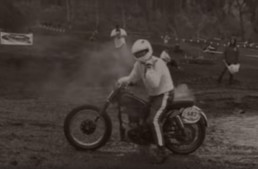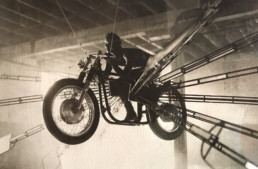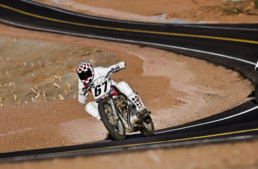By Martin Squires
Hedley Cox and the 1951 Covel 500cc twin
At the age of 18, Hedley Cox embarked on a project that remains alive to the present day. While working at Veloce Ltd. as a works racing mechanic, in his spare time Cox raced a 350cc Mk. VIII KTT Velocette. He hankered for a 500cc mount – there was such a machine sat in the corner of the factory workshop, but his boss would never allow him to use it. The only other racing 500cc Velocette he knew at the time belonged to Les Archer, but it was uncompetitive by 1950. Other options lay with competing marques and a loyalty to Veloce steered him away from them. With an aim to compete in the 1951 Manx Grand Prix, Hedley had a year to work it out.
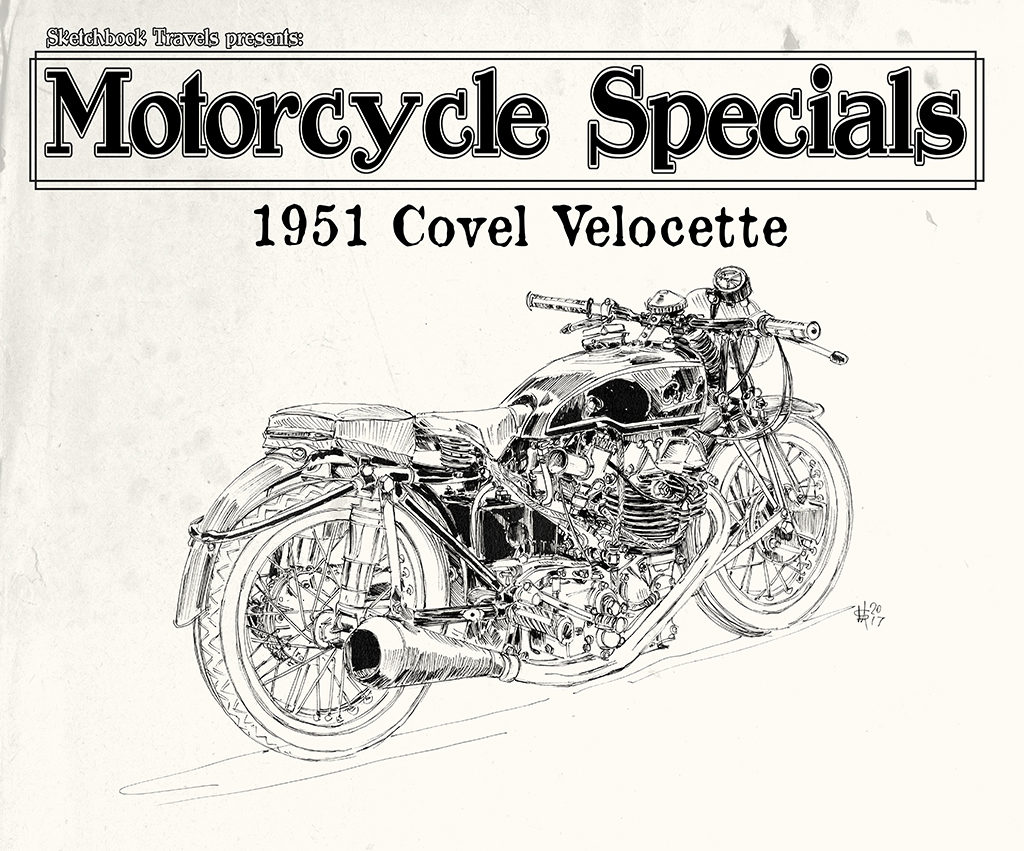
Inspired by an article describing a sidecar outfit running two parallel Norton engines, Hedley started to consider how to combine two Velocette 350cc power plants. At the time, most foreign racing firms were moving to multiple cylinder machines and so this seemed like a sensible option, even though most British makers were sticking with the single. Eventually, Hedley reasoned that if he removed the bevel housings and shortened the stroke of two KTT engines, he could fit it into his Mk.VIII frame.
Hedley didn’t have the money to buy much in the way of new parts, so he would look through the Veloce scrap heap to find what he needed. He found a crankcase with the bevel housing damaged – this wasn’t an issue, as he planned to remove it in order to get the width of the unit down. Hedley had another reason for removing the bevel drive – he wanted to use a cam chain, like the 7R AJS used.
Over a period of time, Hedley acquired the rest of the two engines piece by piece from the scrapheap, all for good prices and signed off by Harold Oliver, of the spares department. The barrels and head all had some sort of defect and would need work – despite this, Hedley soldiered on, convinced his twin would work. In order to keep within the 500cc capacity, Cox shortened the barrels with his secondhand lathe, making the engine 1¼ over square. As a result, it would also rev to 8000rpm. A gifted BTH twin-spark mag gave Hedley his ignition; each barrel would fire on every other stroke, as this was the only way he could get it to fire without having a bespoke magneto. Hedley possessed a true workshop mentality, as he always worked with what he had. A further example of this is the use of a box spanner and corresponding bolt to connect the oil pump drive with the magneto drive. The oil pump itself was built using the internals of 1½ Velocette units housed in an aluminium block incorporating an inbuilt pressure relief valve, keeping the pressure at a consistent 12lbs.
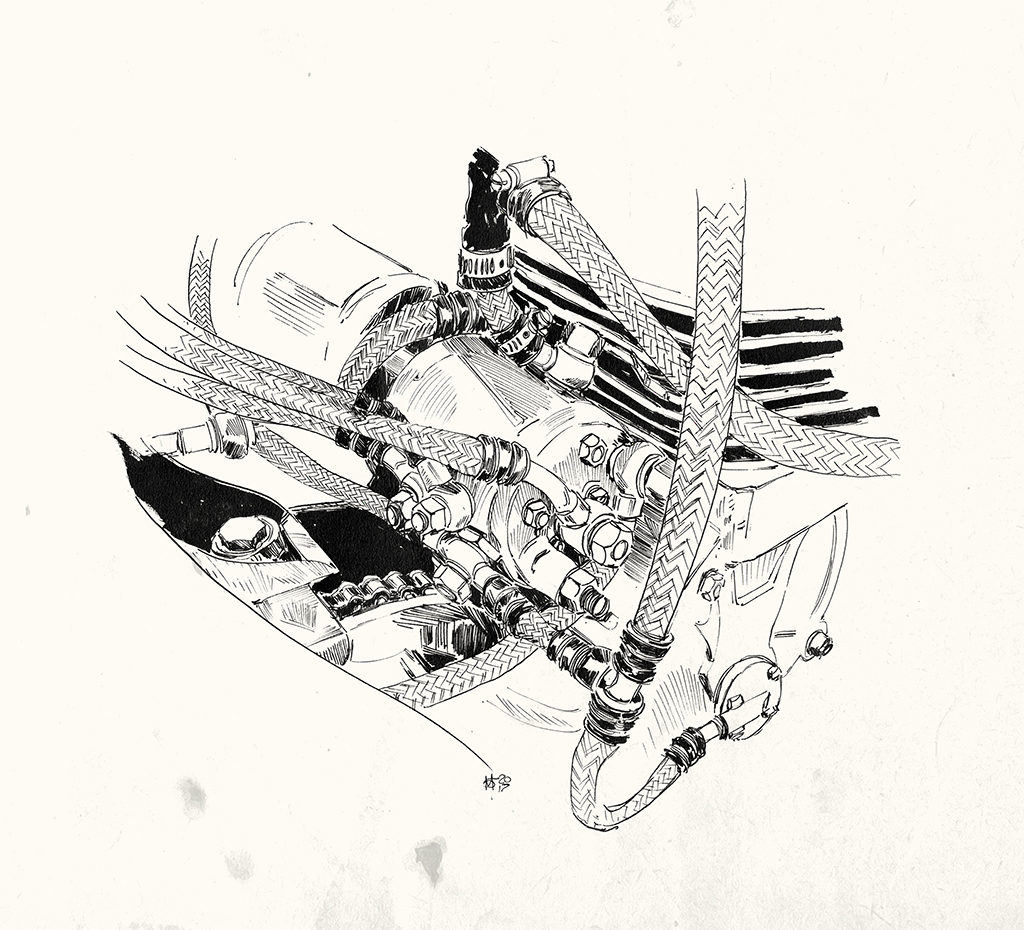
In order to deal with the extra capacity of the 500, the KTT fuel tank would not be nig enough. His friend Ernie Earles built one for him, with a cut-out to allow for the engine. Ernie also gave Hedley a spare KTT frame into which could be mounted the engine, gearbox and tank, as this would save time in the pits changing everything over from the KTT. With the Covel completed, Hedley took it to the 1951 Manx Grand Prix.
Unfortunately, he struck problems during practice due to oiling issues and never made it to the main event, but the distinct twin did not go unseen by the press and it wasn’t long before the top dogs at Veloce Ltd. caught wind of what Hedley had been up to. At the time, young upstarts like Hedley weren’t meant to be innovating without the boss’s say so. Hedley offered the 500 to Veloce for testing as a prototype and proved that all the parts for the Covel had been legitimately obtained. Unfortunately, this didn’t change the minds of Veloce, and they parted ways. After this, Hedley went on to work at BSA Guns and then Armstrong Siddeley Aircraft as a draughtsman. In the meantime, he continued to innovate in his spare time, in the home workshop. Projects included a hub-centre steering machine into which the 500cc twin engine was fitted; it was called this machine the ‘Covel II’ and appeared in The Motor Cycle. Cox also worked on 250cc sleeve-valve engines intended for lightweight racing.
Hedley continued to race motorcycles but tired of being let down by his sponsors, he moved to Canada planning to work hard, save money and return to the UK, to buy the latest and greatest racing machinery. Well, at least that was his dream at the time. The move to Canada would later lead Hedley to work at AMF, then with the money he earned he went on to university in America. After graduating he became a draughtsman for the US Airforce.
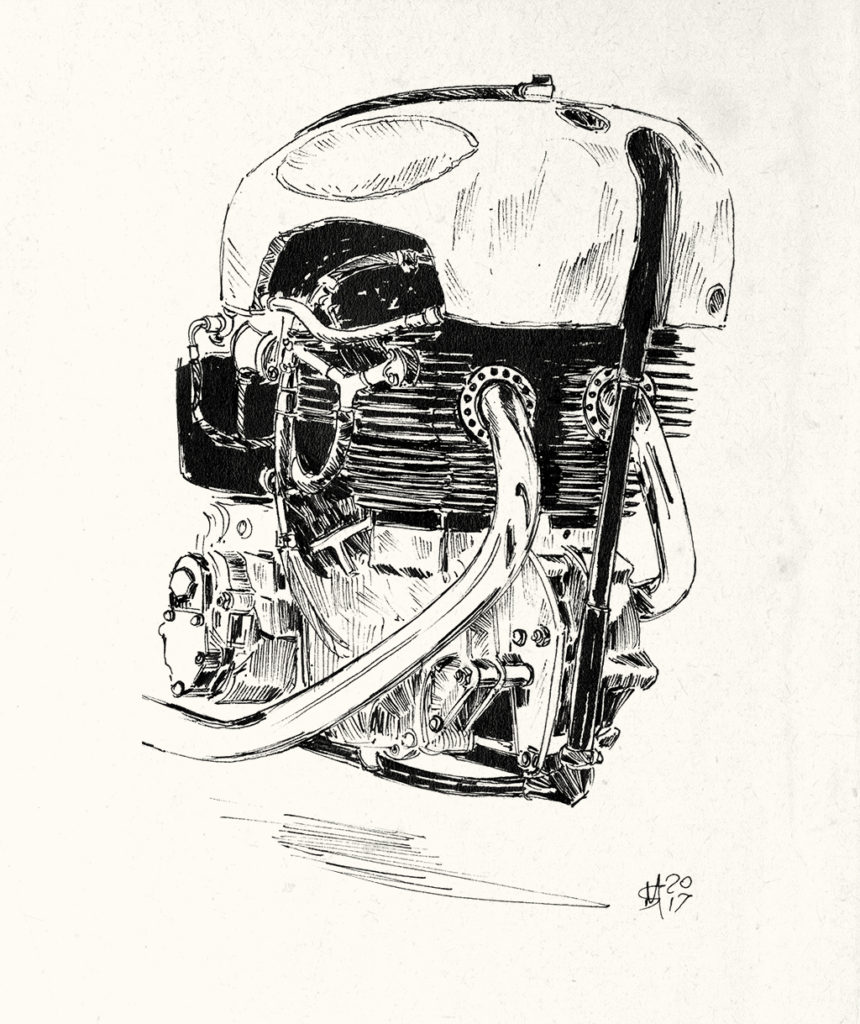
The 350cc KTT and the Covel engine went overseas too. The KTT was sold on but Hedley kept the 500cc twin. After requests from the Velocette Owners Club for the Covel engine, Hedley donated the twin-cylinder engine and gearbox to the club, which intended to build the engine into a motorcycle.
In 1991 Hedley was invited by the Velocette Owners Club to give a talk about his experiences working at Veloce Ltd. He travelled to the UK along with a fibreglass replica of the fuel tank used on the Covel and was keen to see how the restoration was coming along. The engine had been stripped but that was as far as the project had been taken. Hedley wanted to work on the Covel as he had a week or two before flying home. Ivan Rhodes gave him access to a workshop and the parts to get the Covel into a rolling MAC chassis. During this time, Hedley managed to put together the rolling chassis and mount the engine and gearbox within it. After a bump start, the Covel fired up, running only on one cylinder. Time had run out and Hedley had to take his flight home.
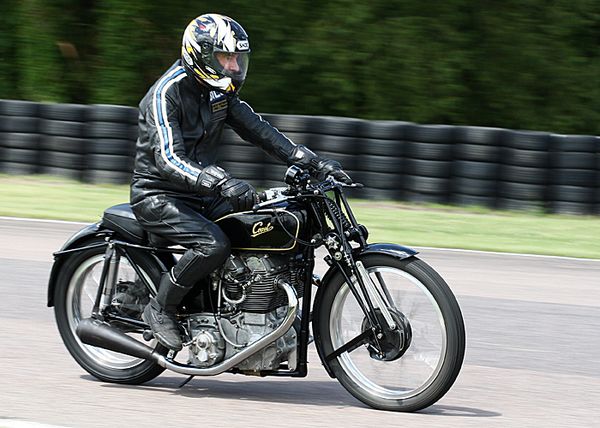
It wasn’t until Bill Dawson showed real interest in completing the project that the Covel came into its own. Bill set about building a KTT frame from scratch using lugs from Australia and half-scale drawings. He also made the girder forks. While stripping the engine, Bill was constantly amazed with the workmanship and thought that had gone into the engine. Hedley had told Bill that one of the heads cracked; it had been repaired professionally twice but with no success. Cox finally fixed it using an aluminium rivet. While working on the heads, one of them showed signs of a crack and, sure enough, under inspection the head split revealing the rivet, like some form of mechanical archaeology.
One of the pieces Bill didn’t make was the new fuel tank – for this he went to Peter Kite, who had free reign to build something that looked the part. The tank is wider than a standard KTT tank and looks great on the bike. It was a shame that Cox’s fibreglass replica was lost to history somewhere along the line, as it would have been good to see it used to recreate Ernie’s original. Nevertheless, Cox is thrilled to see the Covel back as a working machine.
Hedley lives in America and is going strong at 88 and a half. He has written two books on his experiences which give a unique insight into his work at Veloce Ltd., racing and his workshop experiments. Hedley’s drive to run at the Manx Grand Prix in 1951 has led to the creation of a true motorcycle special and thanks to the continued interest of Velocette enthusiasts, especially Bill Dawson, the restoration of the Covel opens up a window into motorcycle history that is not often opened due to machines such as this special disappearing into parts bins around the world.
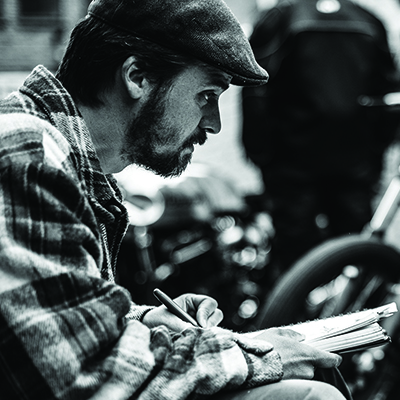
Related Posts
January 14, 2019
The Vintagent Selects: Catalina Grand Prix: A Love Story
Together they Re destined for either…
June 14, 2017
